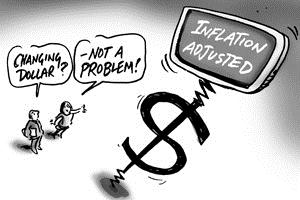In the lead up to the release of 2018/19 NIEIR Data on economy.id, Rob Hall looks at the implications of the current economic environment and recent Reserve Bank decisions for local and regional economies. If you’re about to table a report with 2017/18 data (or earlier), you will be interested to know that updated data is about to be released – see below a schedule of release dates for new data that will soon be available in our local area economic profiles (economy.id).
Skip ahead:
Economic uncertainty
On Tuesday 1 October, the RBA decided to cut the cash rate by a quarter of one per cent to 0.75 per cent. This decision appears to be driven by the RBA’s concern about global economic conditions (e.g. US-China trade disputes) but also observed weakness in the domestic labour force, namely:
- unemployment trending up
- under-employment remaining high
- little upward pressure on wages
We also know from our recent work with councils across Australia that drought conditions have weighed on regional economies.
But the RBA is expecting “a return to around trend growth over the next year”. The factors driving this include:
- Low level of interest rates
- Recent tax cuts
- Infrastructure spending
- Stabilisation in some housing markets (we’ve previously written about the impact of house prices on local economies)
- Brighter outlook for resources
It is safe to say there is a lot of uncertainty about the direction of the economy over the next year given these upside/downside risks. For local government, some factors are likely to affect some regions more than others.
Checking the health of your local economy
These risks illustrate why it is crucially important for economic development officers to monitor the economic growth of a region on a regular basis. By doing so you can check if your strategy is on track, or take early action to address an emerging issue.
This is why we update economy.id regularly so that you can see whether these factors are affecting your local economy. The calendar below shows the expected release dates for the next 6 months. November is set to be a big month for local economic data with the release of jobs, GRP and industry performance for 2018/19.
If you’re in local government and involved with economic development, investment attraction or supporting businesses, learn more about how our economic health checks help local economic development practitioners identify the highest-value opportunities to grow their local economies.
economy.id release schedule
Last updated: 6 November 2019
| Expected date |
LGA Economic Indicators |
Source |
| Oct 2019 |
Building approvals |
ABS |
| Nov 2019 |
Unemployment |
DESSFB |
| Nov 2019 |
Building approvals |
ABS |
| Nov 2019 |
ABN / Business counts |
Australian Business Register |
| Nov 2019 |
Jobs |
NIEIR |
| Nov 2019 |
Gross Regional Product |
NIEIR |
| Nov 2019 |
Industry performance (jobs, value added, output, trade, productivity) |
NIEIR |
| Nov 2019 |
Exports and Imports |
NIEIR |
| Nov 2019 |
Household income and expenditure |
NIEIR |
| Dec 2019 |
Tourism visitation |
TRA |
| Dec 2019 |
Tourism value and employment |
NIEIR |
| Dec 2019 |
Building approvals |
ABS |
| Dec 2019 |
Economic impact model |
NIEIR |
| Jan 2020 |
Building approvals |
ABS |
| Jan 2020 |
Unemployment |
DESSFB |
| Feb 2020 |
Building approvals |
ABS |
| Mar 2020 |
Business counts, entries and exits |
ABS |
Your feedback: what indicators would you like added to economy.id?
We have a list of seven economic indicators we’re considering adding to economy.id. Which of these would you find most valuable? Are there any others we should be considering?
Tell us your preferences here, or leave a comment below.









